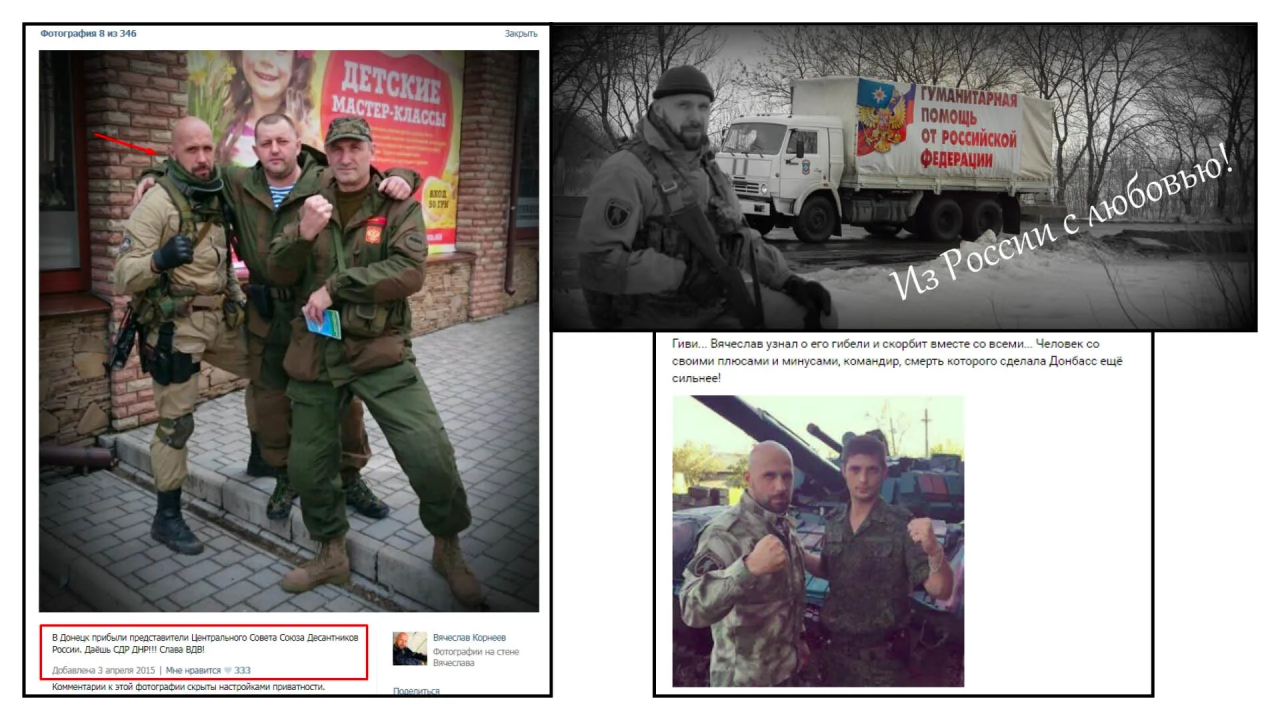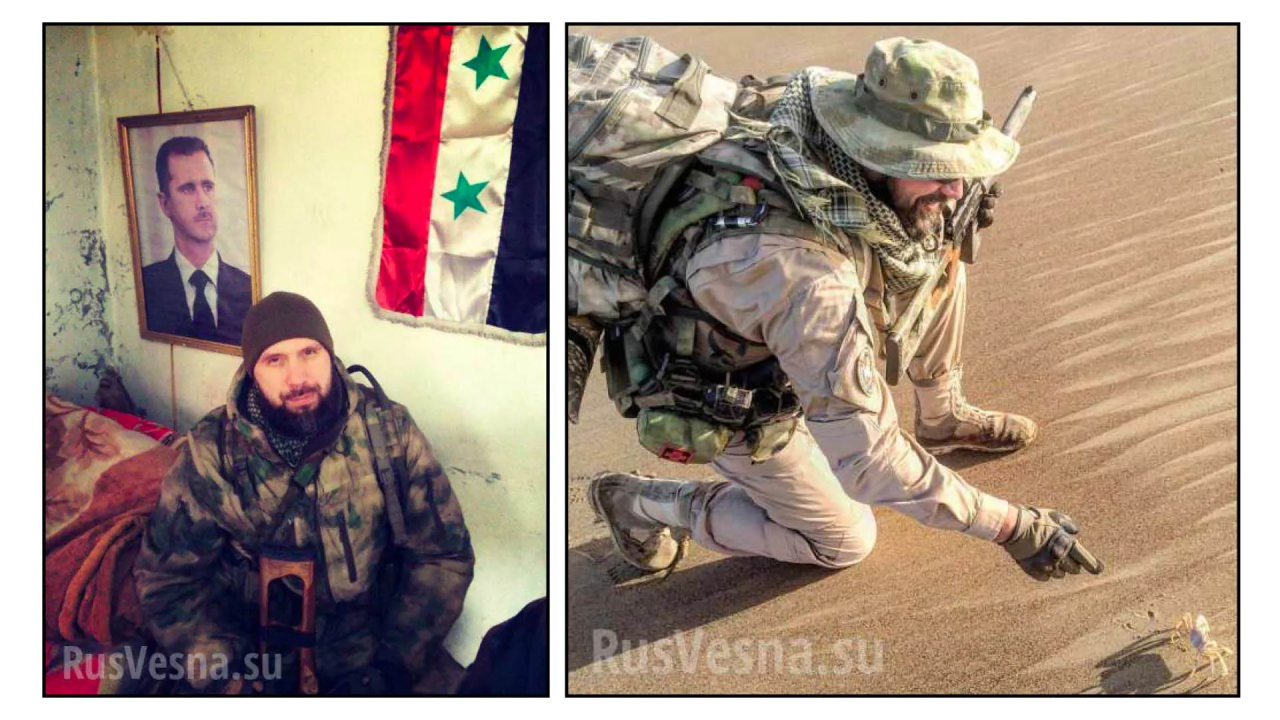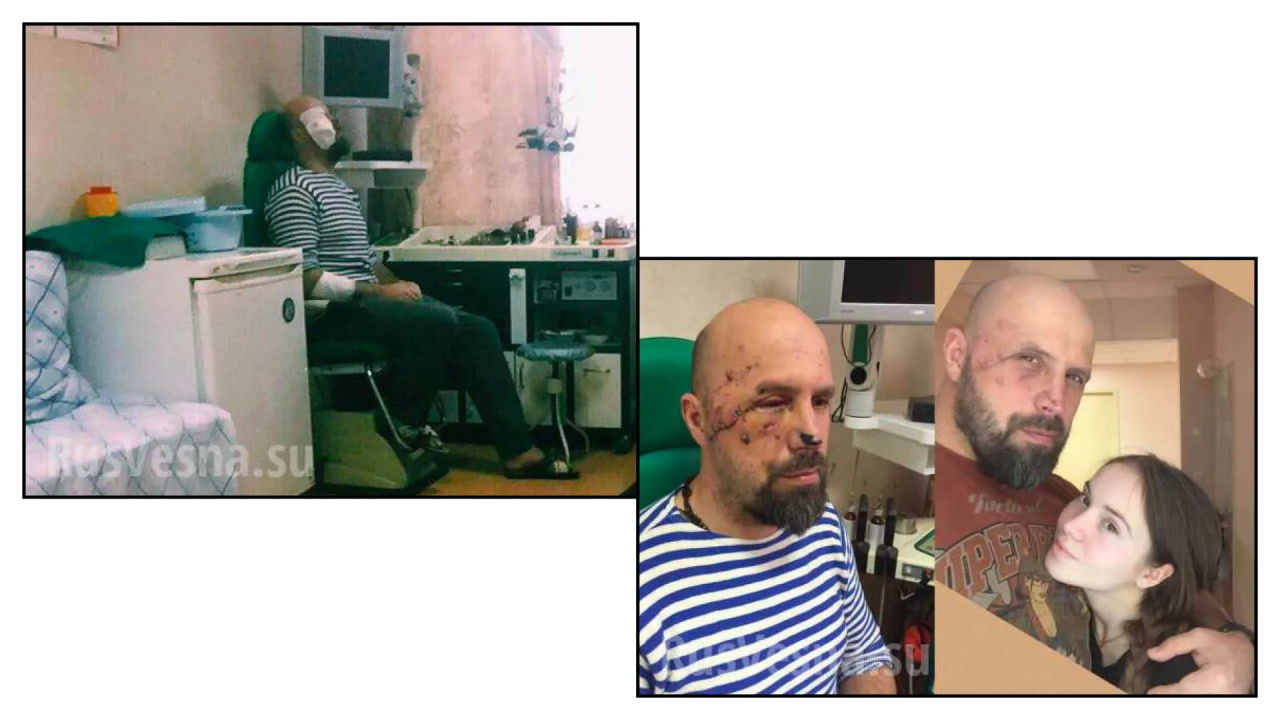#PutinAtWar: The Most Famous Wagner Soldier
Open-source information paints a colorful portrait of one of the highest-profile Russian mercenaries
#PutinAtWar: The Most Famous Wagner Soldier

BANNER: (Source: Defence-Blog/archive)
As the Kremlin continues to engage in non-linear warfare, the demand for Russian private military companies (PMCs) is increasing. Many of the mercenaries that serve in these PMCs are Russian military veterans. Vyacheslav Korneev (Вячеслав Корнеев), also known as “Goblin” (“Леший”), is one of these veterans.
Korneev, a decorated Russian veteran who subsequently served as a PMC mercenary, including for the infamous Wagner PMC, has a large digital footprint, allowing for in-depth exploration of his background.
Korneev initially served in the Russian 45th Guards Independent Spetsnaz Brigade. After being badly injured in a severe traffic incident in 2005, he was discharged from the special operations unit in 2007, and was awarded the Order of Courage and the Medal of Courage. After his discharge, he held positions with various PMCs with which he continued his service, including fighting in Donetsk and Syria. Reportedly, Korneev received an additional medal from the Minister of Defense for his “participation in the military operations in Syria” in 2016, confirming his active participation in the Syrian conflict.
Colorful Public Profile
Outside of his role in the Russian military and with the many PMCs in which he served, Korneev is arguably the most recognizable Russian mercenary. Among the side projects to his PMC activities is a thematic singing career that draws on his military background, replete with patriotic songs often performed in military uniform in a military setting, such as on base.
He has also starred in music videos of his own songs.
A number of his songs were written to glorify the Russian Special Operation Forces, or Spetsnaz. In a song called “Syria,” for example, Korneev sings about the locations where Spetsnaz has fought, including Crimea, Ossetia, Donbas, and Syria.
His public VKontakte (VK) account includes a playlist of his songs. Korneev last posted on his VK account on July 8, 2016.
Connections to Syria and Wagner
The status of Korneev’s affiliation with various organizations has shifted throughout his career; at the moment, however, he likely works for Wagner. According to an article in the Russian version of Radio Free Europe/Radio Liberty (RFERL), Korneev likely transferred from the disbanded Slavonic Corps to Wagner at some point in 2012–2013. Other sources have also confirmed Korneev’s membership with the Wagner Group. A variety of Korneev’s photos online appear to have been taken in Syria.
One of the most iconic photos usually associated with PMC activity in Syria was taken with Korneev posing in the center. The photo was likely taken while he was still serving with the Slavonic Corps, a Hong Kong-registered company established by two Russian nationals who were reportedly imprisoned for recruiting contractors to work in Syria. After the disintegration of the Slavonic Corps, Wagner PMC was established, retaining many of the Slavonic Corps’s mercenaries.

Similarly, evidence of Korneev’s presence in the occupied Donetsk region of Ukraine litters his digital trail. He published three photos, among others, that clearly indicate his presence there, including one of him standing with two men, a photo in which he is posing in front of an alleged humanitarian truck from Russia, and a photo of him posing with separatist commander Mikhail Tolstykh, better known as “Givi.”

On March 4, 2017, reports appeared in Russian media that claimed a car with Russian military advisors had been blown up near Palmyra. The vehicle visible in the images was almost completely destroyed and reports claimed that the blast killed four out of the six servicemen in the vehicle and badly injured the two survivors.
One of the the survivors was Korneev, who was transported to the Military Hospital in Palmyra, for which photos of him in the hospital can be found online.
Conclusion
PMC soldiers play a very specific role in the Russian military strategy: expanding the boundaries of hybrid warfare. While not officially belonging to the armed forces, they nevertheless engage in combat roles in conflict zones and receive medals of honor from the Russian Ministry of Defense.
Most of the PMC troops try to hide their identity and affiliation with the mercenary organizations, but Vyacheslav “Goblin” Korneev is a notable exception. Not only is Korneev open about his affiliation and identity through his large digital footprint, but he also serves as an instrument of soft power for the Kremlin. The glorified persona Korneev showcases on his social-media accounts enables the Kremlin to romanticize the mercenary career path, portraying him as a soldier’s role model. Furthermore, for digital researchers, Korneev serves as a good case study on how soldiers’ digital footprints can provide valuable insight into their mission and activities, particularly in the face of the Kremlin’s public denials.
Register for the DFRLab’s upcoming 360/OS summit, to be held in London on June 20–21. Join us for two days of interactive sessions and join a growing network of #DigitalSherlocks fighting for facts worldwide!



